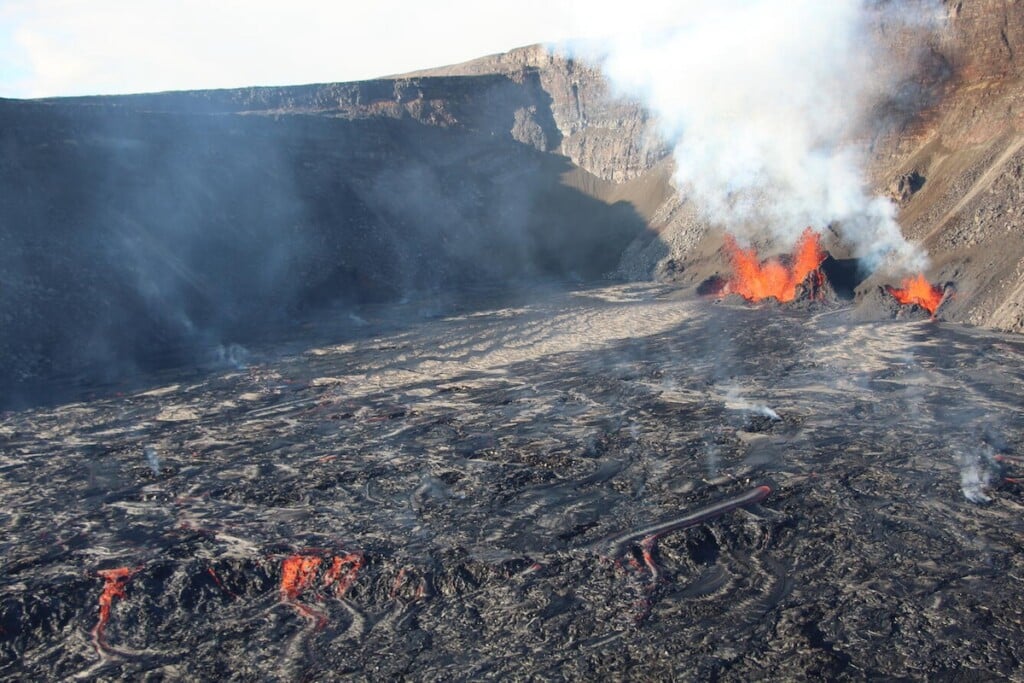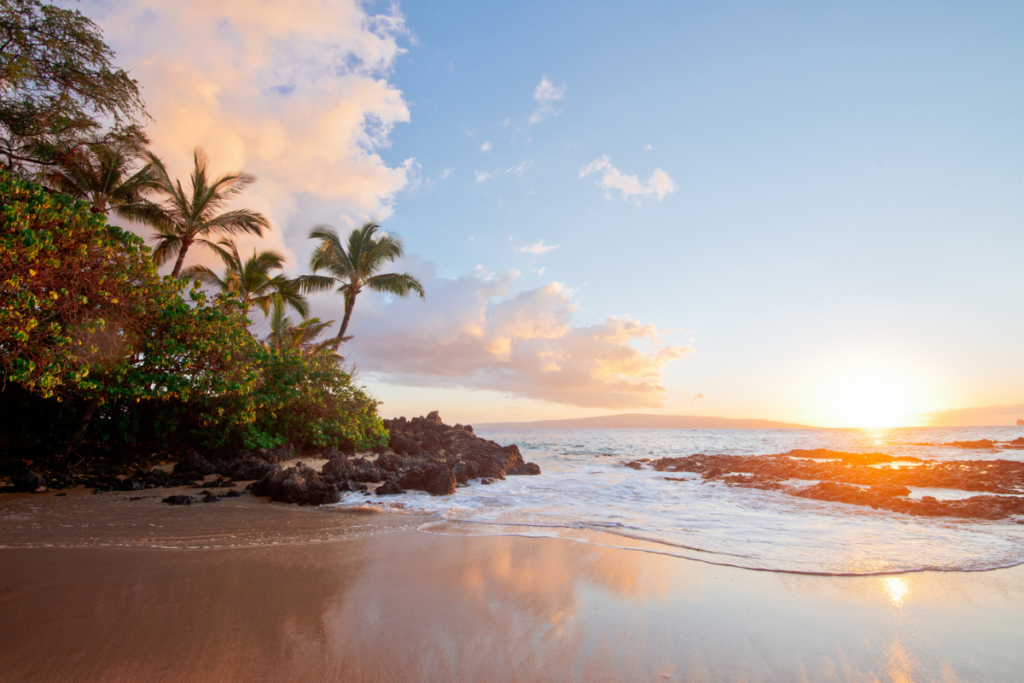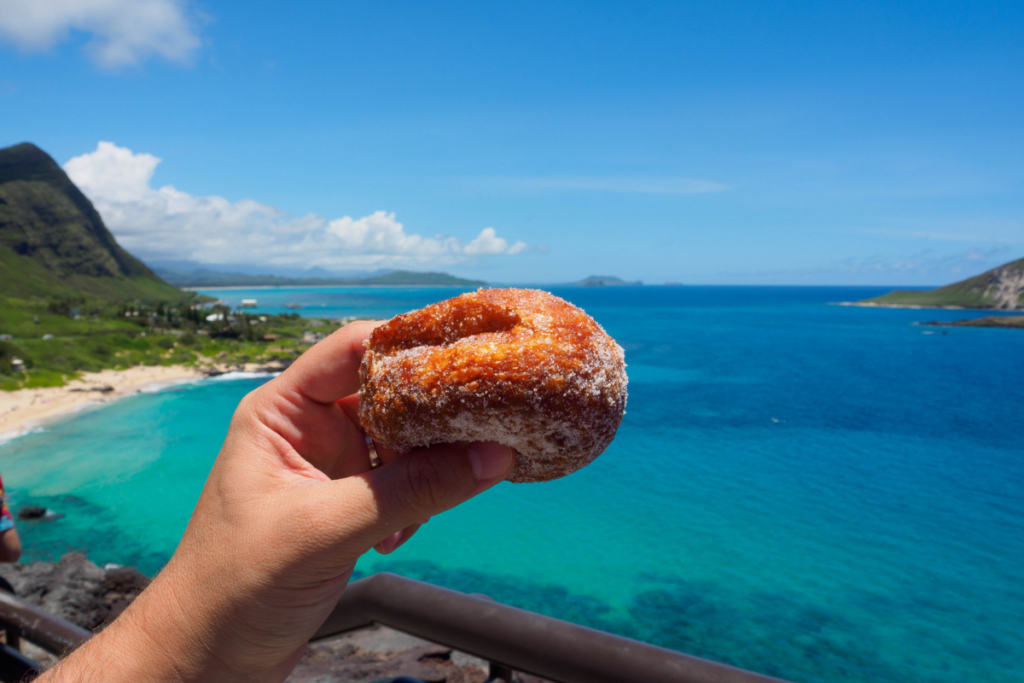How To See Kīlauea’s Current Eruption
The eruption at Kīlauea on Hawaiʻi Island can increase or cease at anytime.

It’s no surprise: Kīlauea’s latest eruption is drawing crowds to Hawaiʻi Volcanoes National Park.
In the early hours of Dec. 23, Kīlauea—one of the world’s most active volcanoes—started erupting in Halemaʻumaʻu Crater with spectacular lava fountains. Since then, though, the eruption has fluctuated in its intensity and can stop at anytime.
Though Kīlauea has erupted this year in other, more remotes parts of the national park, this is the first time it’s erupting inside the crater—and the first recent eruption that’s visible to the public.
If you’re planning a trip to Hawaiʻi Island, here are some of the current eruption viewing points, courtesy of Hawaiʻi Volcanoes National Park. And remember, conditions can change at any time:

Photo: Courtesy of Hawaiʻi Volcanoes National Park
1. Kūpinaʻi Pali (Waldron Ledge) from Crater Rim Trail
Where to Park: Kīlauea Visitor Center
Walking distance: 15 minute (0.5 miles), one-way from Kīlauea Visitor Center. Walk across Crater Rim Drive and walk south on Crater Rim Trail to Kūpinaʻi Pali overlook.
Eruption distance from overlook: The eruption is viewable from 2 miles away.
View: Fountains of molten lava burst into the air from a lava lake. A red glow is visible at night.
Amenities: Parking (125 stalls total), restrooms at the visitor center
2. Wahinekapu at Kūkamāhuākea (Steam Vents)
Where to park: Kūkamāhuākea (Steam Vents) parking area
Walking distance: Lava is visible at Wahinekapu a short 500 feet away from Kūkamāhuākea (Steam Vents) parking area.
Eruption distance from overlook: The eruption can be seen from 2 miles away at the overlook.
View: Fountains of molten lava burst into the air from a lava lake. A red glow is visible at night.
Amenities: Parking (34 stalls total)
3. Overlook near Keanakākoʻi Crater
Where to park: Devastation Trail parking area (limited parking)
Walking distance: 30 minutes (1 mile), one-way over mostly paved terrain if parked at Devastation. 45 minute (1.5 miles), one-way over mostly paved terrain if parked at Puʻupuaʻi. The last 300 yards of this trail is over loose rocky cinders and an uneven surface.
Eruption distance from overlook: 0.5 mile.
View: Fountains of molten lava burst into the air from a lava lake. A red glow is visible at night.
Amenities: Limited Parking (58 stalls total), restrooms at the trailhead
4. Kīlauea Overlook
Where to park: Kīlauea Overlook.
Walking distance: Lava is visible east of Kīlauea Overlook viewing area towards Kilauea Military Camp. 30 minute (1 mile) walk from Kilauea Military Camp.
Eruption distance from overlook: 1.5 miles.
View: Fountains of molten lava burst into the air from a lava lake. A red glow is visible at night.
Amenities: Parking (36 stalls total), restrooms
View this post on Instagram
The national park advises visitors to avoid arriving between 5 and 9 p.m., when viewing areas the most crowded. Bring a headlamp if you’re planning to visit the park at night. (Your smartphone light isn’t good enough.) And wear closed-toed shoes, warm clothes and a rain jacket, just in case.
Follow park rules and do not go into closed areas, which are marked by rope lines. Hazardous volcanic gas can be a danger to everyone, especially people with heart or respiratory problems, infants, young children and pregnant women. Check the air quality before and during your visit.
Weather can change quickly and without warning. Stay informed. Check out the park map and download the new NPS mobile app to help you navigate during your visit.
And, most importantly, be respectful of the place. The park reminds visitors that watching the eruption is a privilege, and it’s important to approach it with respect. Visitors are encouraged to stay silent while observing and take the time to learn about the strong cultural connections between the land and Native Hawaiians.
Can’t make it to Hawaiʻi Island? That’s OK! You can watch a live feed of the eruption wherever you are.


